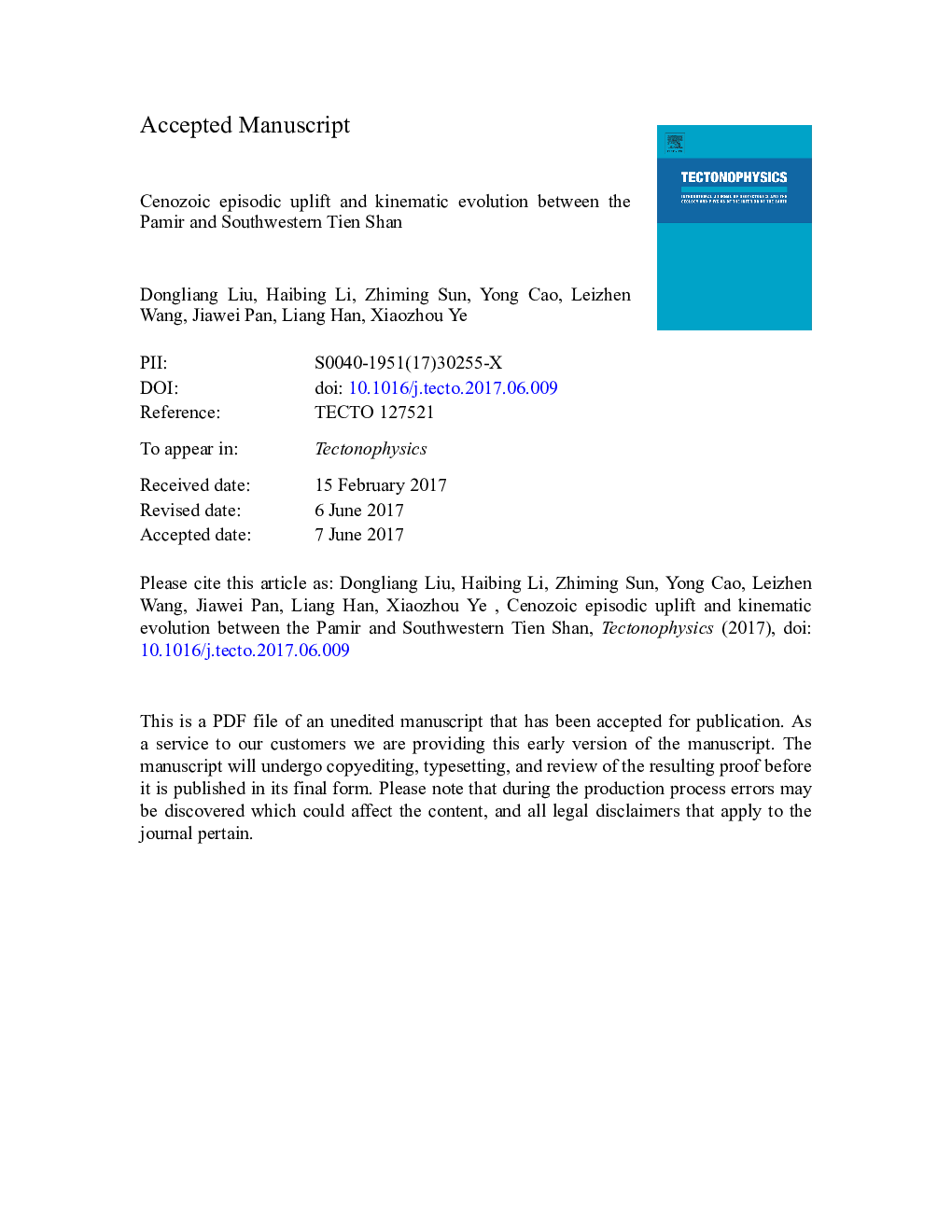| کد مقاله | کد نشریه | سال انتشار | مقاله انگلیسی | نسخه تمام متن |
|---|---|---|---|---|
| 5781551 | 1636694 | 2017 | 59 صفحه PDF | دانلود رایگان |
عنوان انگلیسی مقاله ISI
Cenozoic episodic uplift and kinematic evolution between the Pamir and Southwestern Tien Shan
ترجمه فارسی عنوان
افزایش انقباضات قومی و تکامل سینماتیک بین پامیر و جنوب غربی تین شان
دانلود مقاله + سفارش ترجمه
دانلود مقاله ISI انگلیسی
رایگان برای ایرانیان
کلمات کلیدی
مغناطستراکتی گرافیک، بی هوازی حساسیت مغناطیسی، چرخش پالمو مغناطیسی، پامیر جنوب غربی تین شان، تکامل و تکامل سینماتیک،
موضوعات مرتبط
مهندسی و علوم پایه
علوم زمین و سیارات
فرآیندهای سطح زمین
چکیده انگلیسی
The Pamir Salient and Southwestern Tien Shan belong to two different systems, which collided due to the continuous northward drift of the Indian Plate during the Cenozoic, resulting in a shortening of ~Â 300Â km. The uplift history and kinematic evolution of the Pamir-Southwestern Tien Shan remain unclear. In this study, we chose the 2025 m-thick Pakabulake formation in the East Wuqia section, at the southern-most margin of the Southwestern Tien Shan system, to obtain a high-resolution magnetostratigraphic record spanning ~Â 16.61Â Ma to ~Â 9.78Â Ma. Based on its high sedimentation rate, stable ca. E-W paleocurrents and stable magnetic susceptibility values, the nearby Southwestern Tien Shan was inferred to have undergone stable uplift during this period of sedimentation. Combining our results with the previous low-temperature thermochronology, magnetostratigraphy and re-calculated block rotations, we conclude that four episodic uplift events occurred in the Pamir-Southwestern Tien Shan during the Cenozoic, at times of ~Â 50-40Â Ma, ~Â 35-16Â Ma, ~Â 11-7Â Ma and <Â 5Â Ma, and that the first episodic uplift only occurred in the Pamir Salient. In addition, the Pamir Salient underwent a tectonic transformation from entire- to a half-oroclinal bending rotation during the Miocene, caused by activity along the Karakorum Fault and Kashgar-Yecheng Transfer System.
ناشر
Database: Elsevier - ScienceDirect (ساینس دایرکت)
Journal: Tectonophysics - Volumes 712â713, 21 August 2017, Pages 438-454
Journal: Tectonophysics - Volumes 712â713, 21 August 2017, Pages 438-454
نویسندگان
Dongliang Liu, Haibing Li, Zhiming Sun, Yong Cao, Leizhen Wang, Jiawei Pan, Liang Han, Xiaozhou Ye,
